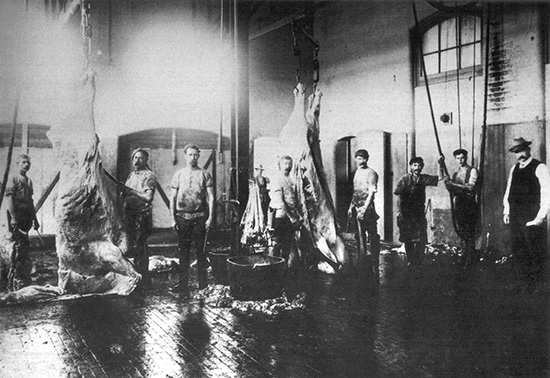Industrial Heartland

(There is a factory with smoke stacks across the back of the picture. There is an anvil, sledge hammers, tools for working with a forge and a square for measuring in building.)
The most visible and memorable aspect of this wharves area has been the continuous presence of industry. From its first beginnings as a tiny settlement nestling in the ti-tree industry has been behind the growth of the settlement and a way of life for most of the community living here.
Nails, barbed wire, bacon, upholstery, spark plugs, yarn, bluestone, metal goods, coffins, ships, shoe leather and whisky are just a small sample of things produced in the survey area. Caskets, wood, pipes, cement, glass, tallow, candles, starch, bricks, gas, timber, bread, gas, sugar, towels, sulphuric acid, insecticides, superphosphate, hydrochloric acid, cornflour and salad oil are a sample of goods from other parts of the wharves. Many familiar and essential products have been made here.
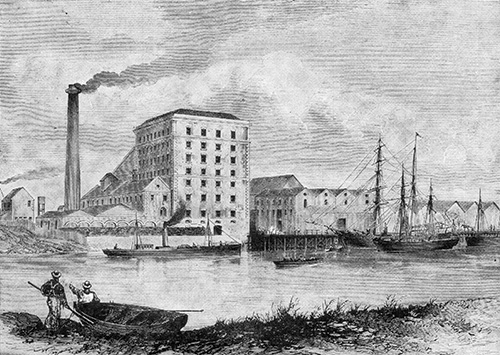
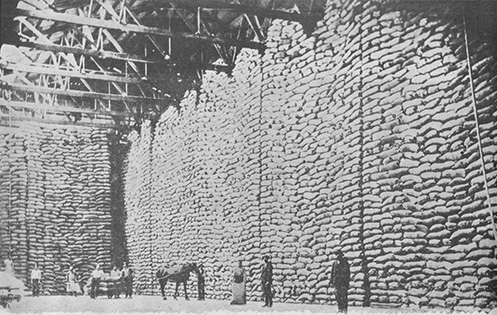
Although this survey is simply looking at the small area between the two bridges, the industrial significance of activities in this area cannot really be appreciated without taking into account industrial activities in the rest of the surrounding wharves area, stretching from Stony Creek in the south to Maribyrnong in the north. Many of them are inter-related. And then it spread inland, extending into Sunshine and eventually evolving into the largest industrial complex in the Nation in the 1950s.
Most of the other activities here on the wharves had grown up to support and service these industries. The first industries, such as quarrying, were more directly related to shipping and
construction. Other local industries related to the pastoral activities on the Western Plains, such as abattoirs, tanneries, acid plants, candle works and boiling down works. In the 1870s and 1880s came heavier industry such as foundries, engineering shops and the Gas Company. And they kept coming.
The wharves area of Footscray, since the earliest days of settlement, had played a significant role in the industrial development of Melbourne and Australia. However this era was disappearing when this survey was first written in the 1980s and is almost invisible now as Footscray is rapidly transforming into an inner city fashion hub. Now it has a wine bar.
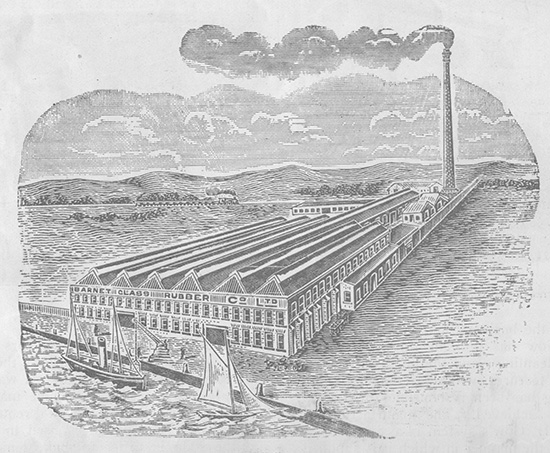




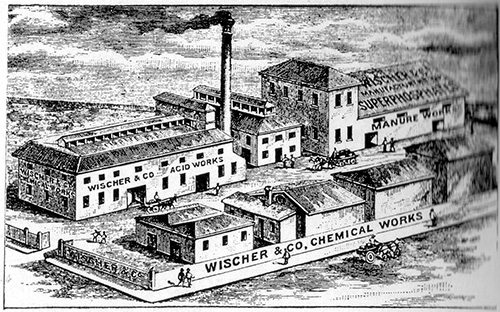
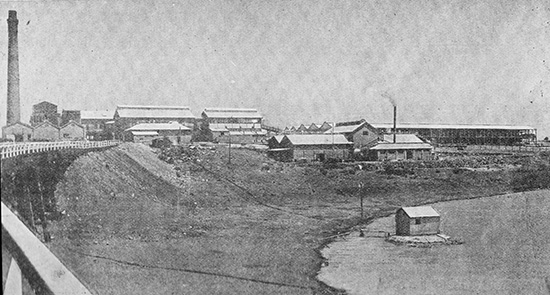
Which, like so many other large industry sites, is now a housing estate.
